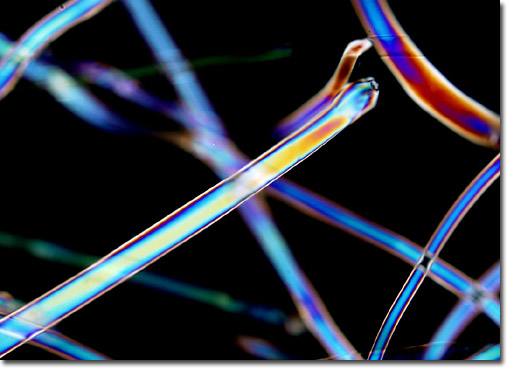|
Despite the luxurious qualities of cuprammonium rayon, the most commercially important variety of rayon is viscose rayon. This fiber, which was developed by a group of British scientists only a year after the cuprammonium type was first created, involves treating the cellulose with sodium hydroxide followed by carbon disulfide to create cellulose xanthate. This substance is then re-exposed to sodium hydroxide, in which it dissolves into a viscous fluid that can be forced through a spinneret. The strands that emerge are solidified by exposure to a coagulating bath. Viscose rayon is commonly found in a wide variety of clothing, often in blends, as well as in carpeting and other textiles for the home.
|
